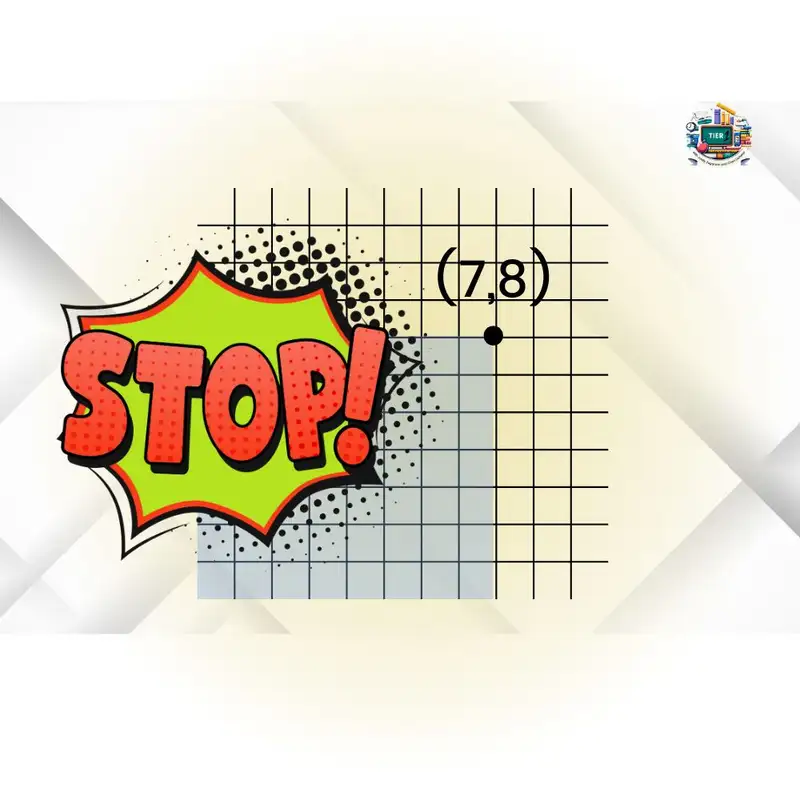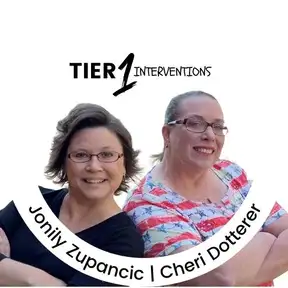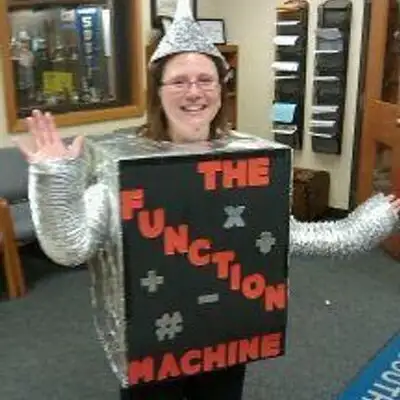
Stop Teaching Multiplication the Old Way—Try This Strategy
Unknown Speaker 0:03
Jay, welcome to tier one interventions podcast. I'm your host today, Jay Z that's Jonily Zupancic, and we are here today to talk about the third
Unknown Speaker 0:17
episode in a series of three inspired by a certain article. Our content is three math rules that never expire,
Unknown Speaker 0:31
inspired by and I'll show you
Unknown Speaker 0:36
the article cover inspired by 13 rules in math that do expire, giving credit to the authors carp bush and Doherty.
Unknown Speaker 0:51
And the reason that
Unknown Speaker 0:56
I give that credit is the article 13 rules that expire, and another article 12 math rules that expire in middle school. Talk about the essence of rules, math rules that we teach in school
Unknown Speaker 1:13
that don't transfer as students move through the grades, or as the math gets more complex, or as we start using different types of numbers. So when we get into a different number system, the rules that applied maybe with whole numbers don't apply in a situation with non whole numbers. So in our series on tier one interventions podcast, we are looking at three math rules that never expire, no matter how the numbers change, no matter how the complexity of math, of the mathematics changes, no matter what grade level content we're looking at, there are three math rules that never expire. So check out the other two episodes. Number one is division is counting. Division is skip counting and number two subtraction is distance. And today is the third series of this sequence, or the third episode of this series, which is multiplication, is rectangles. This is the intro. So the series of three, division, subtraction, multiplication, are all intros. And then look for podcasts later that are the same series of three, three different episodes, a chunk series. And in the series, we will elevate the intro level to look at the same ideas in a more complex way.
Unknown Speaker 2:45
So based on that introduction, let's get to the content. Today's content multiplication is rectangle, and I'm going to go ahead and start with what we have for the other two rules that never expire, and that is a cycle. We're going to look at cycle a today. We do have cycles A through Z for each of these three rules that never expire. Today is multiplication, and we're going to look at the progression for multiplication. This is just thinking about multiplication always in terms, always from the perspective that multiplication is rectangle. So if we look at seven times eight, and first of all, let's, let's back up for a moment, because we don't just randomly select any types of numbers for these cycles. Seven times eight is one of those multiplication single digit facts that oftentimes students don't just know. It's a tricky one. So I like to use lots of sevens, eight, nines and sixes as well as 12. So there's a deliberate and intentional selection of the numbers that we're using in the series of these cycles. So seven times eight is very purposeful, very intentional,
Unknown Speaker 4:09
and seven times eight is also very important at the 10th grade level, and just as important at the first grade level. Now at the first grade level, we may not call it seven times eight, because multiplication is rectangle. We may ask students early on, but again, same numbers, same cycle, same idea, just like our 10th grade students may still struggle with single digit multiplication facts, all of the pieces of the cycle are important for many grade levels. And here's a slide deck that I'm showing you. If you're listening to just the audio version of this podcast, jump over to YouTube tier one interventions podcast, and you'll be able to see my screen, although I will be articulate.
Unknown Speaker 5:00
All of it. So if you're just listening through audio, I will make the visualization for you. My screen now is sharing some slides that you will have access to in the show notes,
Unknown Speaker 5:13
and what you're seeing in front of you is a blank multiplication chart. So 12 by 12 multiplication chart. You see the 12 along the top, the 12 numbers along the side, but no numbers filling in the multiplication chart. We call this the blank multiplication chart. But in the earlier grades, we call it the dimension chart. So in preschool, kindergarten, first grade, second grade, we call this the dimension chart. And it is blank for a reason. If we're looking at making a rectangle that's eight by seven, or looking at the math fact seven times eight, and we want to interchange this language with our younger students. We're going to spend more time, like I'm spending more time right here, with our older students. It's going to happen very quickly,
Unknown Speaker 5:56
and if they already have the automaticity of it, no need to spend time on this portion of the cycle.
Unknown Speaker 6:04
Then we look at the dimension chart, where we highlight seven on the top and eight on the side, because we're trying to look and visualize at a rectangle that is a seven by eight. Oftentimes students have trouble finding what we call the connector box. The connector box is where we're going to write the number that is the number of dots or the number of squares. In this rectangle, that is a seven by eight.
Unknown Speaker 6:35
So with our younger students, maybe all we're doing in this cycle is looking at the single digit side lengths and having students highlight those side lengths on the dimension chart and find the connector block. Maybe that's all we're doing.
Unknown Speaker 6:53
I have drawn a cloud in purple showing the connector block, and now the challenge is what number goes in the connector block. The number that goes in the connector block is the number of dots or blocks or units that it takes to make a seven by eight, eight by seven. If we look at blank grid paper, we can draw eight by seven, make our rectangle and count the number of unit squares. Or if I make this rectangle with dots, we can count the number of dots in the array that makes an eight by seven.
Unknown Speaker 7:33
Then we ask students to go back to the dimension chart in that connector block, where we put that cloud. And the number that goes in the connector block is what we call the array number. Later on, this number is going to be called the area of that rectangle. So this is very essential to start this early on and then refer to these ideas as students are older. And obviously we can, and I'm showing you seven sets of 8.8
Unknown Speaker 8:03
by seven or eight times. Seven is also skip counting by eight, seven times, or skip counting by sevens, eight times. We want to bring that visualization and context into it as well. However, the rectangle is most important when we are associating multiplication, which will bring us to our next set, or our next problem in the set, which is 28 by 17, deliberately choosing a two digit number that ends in eight, two digit number that ends in seven. So we'll go back to our cycle. Take a look at 27
Unknown Speaker 8:41
times 18, or I say, even at the second grade level, let's make a rectangle that is a 27 by 18. Let's count and figure out the array number. Now, I'm not going to go through this
Unknown Speaker 8:58
slowly. I am going to do this quickly,
Unknown Speaker 9:02
just to show the point that 27 is 210s and a 718,
Unknown Speaker 9:12
is a 10 and an eight. And what we've essentially done here, if I use a different color, is we have created a rectangle that is a 27 by 18. And if I fill in these parts, and this is really important, because with single digit multiplication, we can do this as well. But when we start to get into multi digit multiplication. What we're going to notice is we have these parts
Unknown Speaker 9:49
that are created by the place value of the numbers. Now if I use one more color here, really with two digit multiplication, we want to.
Unknown Speaker 10:00
Show two digit by two digit multiplication. We want to show two parts. We want to show that 20 and the seven and the 10 and the eight.
Unknown Speaker 10:14
And then we can fill in these pieces. So what happens is we can do 27
Unknown Speaker 10:21
I will pull this up again on grid paper. We can one to one correspond 20
Unknown Speaker 10:30
I did that backwards. I called it 28 by 17, and then did 27
Unknown Speaker 10:36
by 18. We have two different problems going on. You get the point.
Unknown Speaker 10:40
But we could one to one correspond this where every block is one, and students can literally do 27 or 28 by 17 or 18. We start on grid paper. When students struggle, we have them use blocks to build it so we have concrete. Then we go to the grid paper, representational. And then we go to what we call the generic rectangle. We fill in these pieces, and we find the array number, or as students are older, we find the area, and it is very important that the numbers and the problems in these cycles are not grade level specific. With this focus that multiplication is rectangle, we can eliminate the multiplication and just talk about rectangles. And first and second graders can have access to a 27 by 18, by building with blocks and by counting unit squares or counting dots,
Unknown Speaker 11:39
they can really start doing two digit multiplication prior to the grade level that we expect them to master. It. Same thing with secondary students. Secondary Students still struggle with single digit multiplication and double digit multiplication. This goes much quicker with the grid paper, with the generic rectangle and iterating, reiterating place value with our secondary students. So one mistake is thinking that each problem in the cycle is grade level specific. The entire cycle is for every grade level. Because we are making this math rule that never expires. Multiplication is rectangle. We're making this math rule transferable. It never expires, no matter what types of numbers. So for example, if we look at the next problem eight times a half, we are making a rectangle
Unknown Speaker 12:37
that is
Unknown Speaker 12:41
a length of eight. Well, let's look at an eight by one.
Unknown Speaker 12:47
And if we look at an eight by one, then
Unknown Speaker 12:52
we can
Unknown Speaker 12:55
dot off the eight by one half, so we can create this one half situation. Well, we know that an eight by one is going to give us eight, an array number of eight, eight unit squares. So if we cut all of those unit squares in half, because we really only want this eight by half.
Unknown Speaker 13:24
Then I've got eight sets of half squares. So that is going to give me an array number of four. And I know I went through that quickly. We can use grid paper, cut them in half. Kids can cut with scissors and make it much more contextual conceptual. But as students get older, we're just going to quickly do these diagrams and associations of multiplication and rectangles. But younger students can still have access to arrays with fractional parts. And then finally, we'll take a look at, oh, not finally, we have two more we're going to take a look at this generic rectangle, which we can make two and decimal five, which is a half. We're making two half this way. And then we have to think, Okay, if we did this by one, so we have two and a half by one if I make this, so if I make the whole thing one, or if this is one, then what I need to do here is, like I did before, cut this in half. There's lots of ways to make these models, and we want to be very flexible and versatile. So if we do two and a half by one, then the array number is two and a half. But if we do two and a half by
Unknown Speaker 14:52
half or decimal five instead of the whole one, that's only this portion. So if this whole block.
Unknown Speaker 15:00
Is two, then this is going to be one, and then
Unknown Speaker 15:05
this gets a little tricky, and for younger students, we want to expose this, but we may not ever find the exact result for this. We may just leave that linger, because if this whole thing
Unknown Speaker 15:22
is a half by one, then that would be a half. So what would this piece be? Which is half of that half we may just leave that to linger. All we want is for younger students to have exposure now for our older students, we want to dive into this and explore what that looks like, and that might mean using
Unknown Speaker 15:46
through
Unknown Speaker 15:48
maybe one inch by one inch grid paper, and actually cutting and moving the paper so the kids have that experience. And then finally, and this is why and how this math rule of multiplication is rectangle never expires, because now we can draw this generic rectangle
Unknown Speaker 16:08
that is an x plus two by x plus three.
Unknown Speaker 16:15
And if students have had much exposure to multiplication is rectangle. We can use this rectangle to find the array or the area of a rectangle with side length, x plus two by x plus three. So we have four parts x squared plus 3x plus 2x plus six, and then we can write that all out and write our answer. I know that was fast and furious, but the point is, multiplication is rectangle. And through these numeric cycles, we can show that no matter what types of numbers we end up using, or no matter what grade level we're in, we can use
Unknown Speaker 17:09
very complex mathematics. We can expose students to very complex mathematics in a visual, contextual, conceptual way, with the rule multiplication is rectangle so.
Transcribed by https://otter.ai
Episode Video
Creators and Guests


